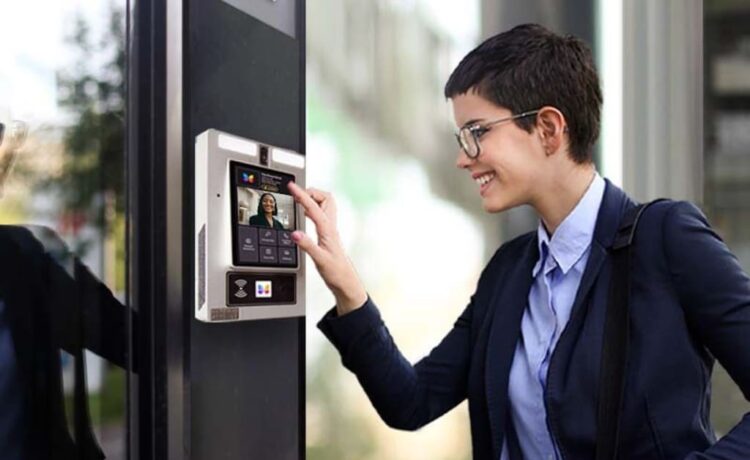In today’s fast-paced world, ensuring both security and seamless communication has become a top priority for homes and businesses alike. Intercom systems offer an innovative solution, combining convenience with enhanced safety measures. Whether it’s monitoring visitors or streamlining internal communication, these systems have transformed how people interact within their spaces.
The installation of an intercom system not only boosts security but also adds a layer of modern functionality to any property. With advancements in technology, intercoms now integrate features like video capabilities and remote access, making them an essential tool for smarter living and working environments.
The Dual Role of Intercom Systems in Access Control and Communication
Intercom systems serve a critical function in both managing building access and improving communication. They act as a secure gateway by enabling controlled entry. These systems allow property owners and occupants to verify identities before granting access. For example, video intercoms equipped with cameras display live feeds, adding a layer of visual security.
Communication within buildings becomes seamless with intercoms. They connect multiple points, such as rooms or departments, reducing the need for physical interaction. This efficiency is especially valuable in large commercial spaces or multi-story residential buildings.
Intercom system installers focus on optimizing placement to cover entry points and shared areas while integrating with existing security infrastructure. Their expertise ensures that the system performs effectively for access management and internal communication.
Designing Intercom Systems for Residential vs. Commercial Use
Intercom systems differ significantly in design based on whether they’re installed in residential or commercial properties. Tailoring the system to meet the unique requirements of each environment ensures both security and functionality.
Residential Intercom Systems
Residential systems prioritize user convenience and home security. These systems often include video intercoms for visual identity verification, along with portable or wireless units for ease of use. For single-family homes or apartment complexes, intercom system installers focus on minimizing installation disruption by integrating the system with existing home automation technologies. Systems may also support features like remote access and doorbell camera integration for seamless monitoring.
Commercial Intercom Systems
In commercial settings, intercom systems emphasize scalability and reliability. These systems must handle high traffic while maintaining secure access control. Forbel and other professional intercom system installers design commercial setups that include multi-line functionality, integration with keycard or biometric systems, and robust video monitoring for large properties. They ensure the intercom supports centralized control for efficient management across offices or facilities.
Key Design Considerations
When designing these systems, factors like property size, the number of users, and security priorities influence the technical configuration. Residential intercoms typically focus on aesthetics and user-friendly interfaces, while commercial systems prioritize durability and advanced security integrations. For effective implementation, installers also consider existing networks or infrastructure compatibility.
Ensuring Compatibility with Existing Building Infrastructure
Compatibility with a building’s current infrastructure greatly impacts the success of intercom system installation. Professional intercom system installers evaluate wiring, power supply, and network configurations to ensure seamless integration and functionality. For buildings with outdated systems, retrofitting options may be required to bridge gaps between older components and modern intercom technology.
Structural considerations play a vital role, especially in commercial properties with complex layouts. Installers assess wall materials, cabling pathways, and mounting points to minimize disruptions during installation. They also coordinate with property managers to align the system with building codes and regulations.
Integration with existing technologies further enhances system usability. When incorporating intercoms into properties equipped with automation systems, installers ensure compatibility with access control, surveillance, and communication technologies. This cohesive setup allows users to manage all systems efficiently from a unified interface. Options like IP-based intercoms simplify these integrations by offering advanced connectivity with minimal infrastructure upgrades.
User-Friendly Features to Look for in Modern Intercoms
Modern intercom systems combine advanced technology with intuitive interfaces to enhance usability. These features cater to convenience while ensuring security and seamless communication.
- Video Integration
Video intercoms allow users to visually verify visitors, improving security and decision-making for access control. Live video feeds on devices like wall-mounted units or mobile apps provide remote monitoring functionality. - Touchscreen Interfaces
Touchscreen panels simplify navigation with clear menus and interactive options. Users can access settings, call logs, and communication tools quickly, making these systems suitable for all age groups. - Mobile App Connectivity
Smartphone integration enables control and monitoring from anywhere. Users can answer calls, unlock doors, or receive notifications via dedicated mobile applications. - Hands-Free Communication
Hands-free intercoms provide convenience in high-traffic or workplace environments. This feature is particularly advantageous for commercial setups requiring uninterrupted operations. - Multi-Point Connections
Intercoms supporting multiple endpoints improve communication by linking entrances, rooms, and floors. Examples include multi-unit residential buildings or large offices with several access points. - Customizable Settings
Personalized user settings, such as volume control and contact storage, enhance flexibility. These options accommodate unique user preferences and increase satisfaction. - Integration with Smart Systems
Compatibility with home automation platforms and security devices centralizes control. Users can manage intercoms alongside surveillance cameras, alarms, and smart locks through unified systems like IP-based networks.
Intercom system installers, such as Forbel, often recommend these features for enhancing user experience across diverse property types. Incorporating these functionalities ensures streamlined operations and optimal convenience.
Improving Operational Efficiency with Advanced Intercom Solutions
Advanced intercom systems enhance operational efficiency by simplifying communication and access management. These systems reduce response times and improve coordination across large properties by enabling instant communication between multiple access points. For example, commercial buildings with multi-line intercoms can connect departments or entry zones, ensuring seamless workflow and faster decision-making.
Automating access control with features like keyless entry or biometric integration further streamlines operations. Employees or residents gain easy access, while property managers reduce time spent on manual verification. Video-enabled intercom systems let users visually confirm identities, cutting down on security inefficiencies and enhancing accuracy in visitor management.
Integration with other smart systems maximizes productivity. By connecting intercom systems with surveillance cameras or building management software, users oversee security, monitor activities, and manage workflows from centralized platforms. IP-based intercoms, in particular, enable remote monitoring and real-time communication via mobile apps, which optimizes operational processes across locations.
Expert intercom system installers, such as Forbel, analyze property layouts and user needs to design systems tailored to operational requirements. They ensure optimal device placement for uninterrupted functionality, addressing bottlenecks in communication and access control. Custom configurations, like zoning options, help allocate resources more efficiently, especially in high-traffic areas.
Tips for Choosing the Right Installer for Intercom Systems
Selecting a qualified installer is key to maximizing the benefits of an intercom system. Look for professionals with proven expertise in both residential and commercial installations to ensure they understand your unique needs. Their ability to assess your property layout, existing infrastructure, and security priorities will directly impact the system’s performance.
Reputable installers should offer tailored solutions, integrating the latest technologies while minimizing disruptions during installation. They should also provide guidance on system features, ensuring compatibility with your property and future scalability. By partnering with a skilled installer, you can achieve a seamless setup that enhances security, communication, and overall convenience.







